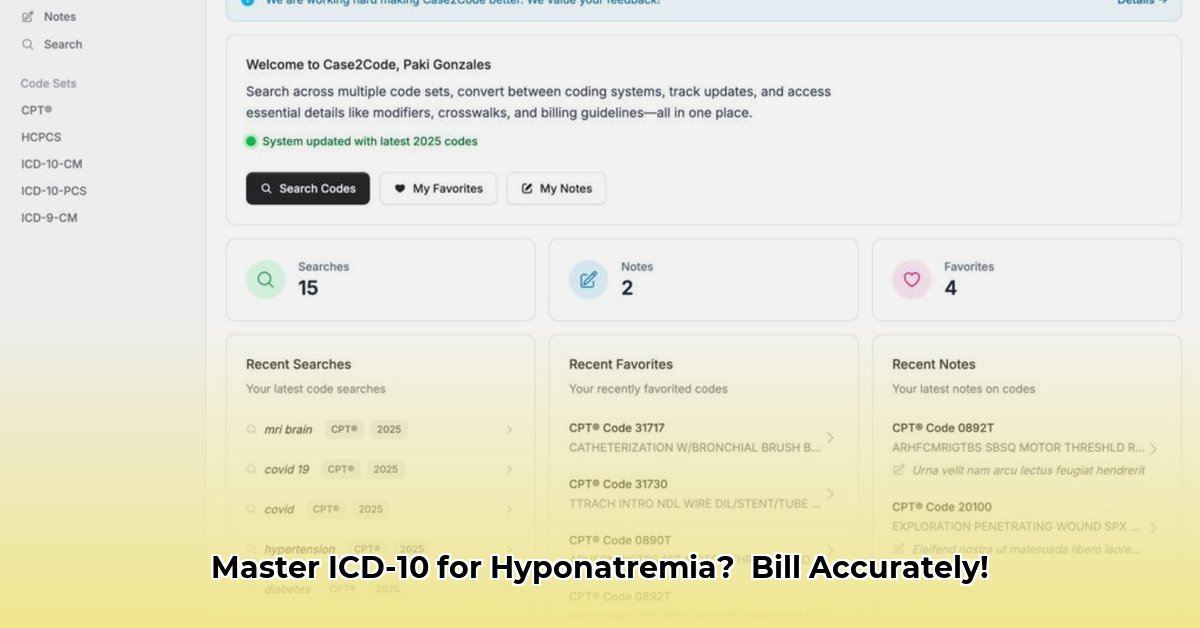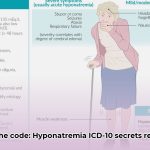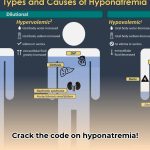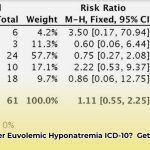Accurate medical billing is essential for a smoothly running healthcare system and proper compensation for healthcare providers. ICD-10 codes, particularly for conditions like hyponatremia (low sodium in the blood), can be complex. For more in-depth information, check out this detailed guide. This guide helps doctors, nurses, and medical coders master hyponatremia ICD-10 codes. It provides step-by-step instructions, helps avoid common mistakes, and assists in choosing the perfect code every time. With these insider secrets for accurate billing, you can confidently handle hyponatremia cases, improve medical coding accuracy, and prevent costly errors. Let’s begin!
ICD-10 Code for Hyponatremia: Your Guide to Accurate Medical Billing
Hyponatremia, defined as low sodium in your blood (less than 135 mEq/L), can be tricky to code accurately for insurance claims and regulatory compliance. Proper billing and clear medical records depend on correct coding, which impacts healthcare revenue cycle management. Let’s break down how to use the correct ICD-10 codes for complete healthcare information management.
The Main Code: E87.1 – The Foundation
The basic ICD-10 code for hyponatremia is E87.1, “Hypo-osmolality and hyponatremia.” Consider this your starting point, a general code for low sodium levels. However, it’s often not enough on its own for medical necessity documentation. More detail is crucial for enhanced data analytics and reporting!
Going Beyond the Basics: Specificity is Key
While E87.1 covers the general condition, more specific codes exist. These additional codes paint a complete picture, showing the underlying reason for the low sodium and the overall health situation to ensure compliance with payer policies. Let’s explore these important additions, as they play a pivotal role in healthcare data integrity.
Why is this extra detail important for medical coding audits? Imagine trying to build a house with only a foundation – it’s not complete! Similarly, using only E87.1 without further explanation results in an incomplete medical record and potentially affects accurate billing and reimbursement optimization.
Uncovering the Root Cause: It’s All About “Why?”
Accurate coding hinges on finding the reason behind the hyponatremia, a crucial aspect of clinical documentation improvement. Several conditions might cause low blood sodium. Here are some possibilities, along with their respective ICD-10 codes, to improve your understanding of healthcare terminology:
-
SIADH (Syndrome of Inappropriate Antidiuretic Hormone): Code E22.2. This hormonal problem causes your body to retain too much water, diluting the sodium in your blood and impacting electrolyte balance. Accurate coding also requires understanding the specific type of SIADH, such as drug-induced, ectopic, or idiopathic.
-
Diabetes Insipidus: Code E23.2. This occurs when your body doesn’t produce enough of the hormone that helps control water balance, leading to excessive urination and sodium loss, affecting fluid regulation. Clarify the type of diabetes insipidus, such as central, nephrogenic, or dipsogenic.
-
Neonatal Hyponatremia: Code P74.22. This specifically applies to newborns and requires its own code to ensure proper newborn screening. Detailed documentation should include the gestational age of the newborn and any associated complications.
-
Hyponatremia due to Drug-Induced Causes: Various medications can cause hyponatremia. Specify the drug using codes from the appropriate section; for example, if the hyponatremia is caused by a diuretic, the specific diuretic should be documented.
-
Hyponatremia due to Renal Disorders: Kidney diseases such as chronic kidney disease (CKD) can impair sodium reabsorption. Use the appropriate CKD stage code along with E87.1.
More than just the “what”: The “how” and “severity” matter too!
Remember, correct coding involves describing the whole clinical story, not just the main problem. Detailing symptoms (think headaches, nausea, confusion, muscle weakness, or even seizures) and how severe the hyponatremia is (mild, moderate, or severe) is crucial, even if these aren’t always directly represented by specific codes for proper patient care management. Note whether the hyponatremia is acute (developing in less than 48 hours) or chronic (present for more than 48 hours), as this can affect treatment.
A Step-by-Step Guide to Accurate Hyponatremia Coding
Think of hyponatremia coding like solving a puzzle; each piece helps create the full picture. Here’s how to correctly approach it, ensuring adherence to coding compliance:
Step 1: Primary vs. Secondary: First, determine if low sodium is the main health issue (primary diagnosis) or a result of something else (secondary). This impacts how you code, determining the hierarchy of medical codes. For example, if a patient is admitted for heart failure and develops hyponatremia during the admission, the heart failure should be sequenced first, followed by the hyponatremia code.
Step 2: The Detective Work: Find the underlying reason for the hyponatremia, utilizing diagnostic testing. Check lab results, the patient’s medical history, and doctor’s notes. This is where you uncover the essential “why,” facilitating evidence-based medicine. Collect serum sodium levels, urine osmolality, and fluid balance data.
Step 3: Choose the Right Code: Using the cause you identified, pick the most precise and appropriate ICD-10 code (E87.1 or a related code like those mentioned earlier), to ensure proper medical code assignment. If the underlying cause is not yet determined, code signs and symptoms until a definitive diagnosis is established.
Step 4: Meticulous Documentation: Record all pertinent information – symptoms, severity, and the identified cause. This ensures accurate billing and a complete medical record, vital for continuity of care. The more detail provided, the better! Include all relevant lab values and clinical findings.
When Things Get Uncertain: Handling Ambiguity
Sometimes, finding the exact reason for hyponatremia is difficult, which is especially important in complex medical cases. In these situations, you might just use E87.1, but you must include detailed notes to explain the situation and the reasoning behind the choice of code, explaining the clinical decision-making process. Document all attempts to identify the underlying cause and any further investigations planned.
The Bigger Picture: Why Accurate Coding Matters
Accurate coding isn’t merely about getting paid; it’s about ensuring high-quality data and improving insurance claim processing. Precise codes enable better research, improved patient treatment, and efficient use of healthcare resources, which all contribute to value-based care initiatives. It benefits everyone involved – patients, doctors, and the healthcare system and improves population health management. Accurate coding also impacts hospital ratings, reimbursement rates, and regulatory compliance.
A Quick Reference Guide: Relevant ICD-10 Codes
| Code | Description | When to Use |
|---|---|---|
| E87.1 | Hypo-osmolality and hyponatremia | General hyponatremia; when the underlying cause isn’t clearly identified, which facilitates clinical reasoning. |
| E22.2 | Syndrome of inappropriate antidiuretic hormone (SIADH) | Hyponatremia caused by SIADH, requiring specific management strategies. Ensure to note if the SIADH is drug-induced, ectopic, or idiopathic. |
| E23.2 | Diabetes insipidus | Hyponatremia caused by diabetes insipidus, impacting renal function. Differentiate between central, nephrogenic, and dipsogenic diabetes insipidus. |
| P74.22 | Hyponatremia, neonatal | Low sodium levels in newborns, requiring immediate neonatal care. Document the gestational age and any associated complications. |
| N25.1 | Secondary hyperaldosteronism | Hyponatremia caused by conditions leading to hyperaldosteronism. Consider coding underlying conditions like Bartter syndrome if applicable. |
| E86.0 | Dehydration | When dehydration contributes to hyponatremia due to sodium loss. |
| R60.0 | Localized edema | Hyponatremia leading to localized swelling due to fluid accumulation. |
Mastering hyponatremia coding takes practice and careful attention to detail, and understanding medical coding guidelines is crucial. By diligently following these steps, you can ensure accurate billing practices and contribute to a comprehensive clinical record, improving healthcare interoperability. Remember, the goal is to accurately reflect the patient’s condition and its causes for improved health outcomes. If you are ever unsure, consult relevant resources or seek guidance from experienced professionals, like certified coders. Ongoing research continues to refine our understanding; stay updated for continuous professional development!
How to Choose the Correct ICD-10 Code for Hyponatremia Based on Underlying Cause
Key Takeaways:
- Accurate ICD-10 coding for hyponatremia is essential for proper reimbursement, contributing to better healthcare economics, and regulatory compliance.
- E87.1 (Hypo-osmolality and hyponatremia) is
- Wellness Fair Ideas for Work to Boost Employee Wellbeing - December 15, 2025
- Affordable Employee Wellness Fair Ideas for Any Budget - December 14, 2025
- Employee Wellness Programs Strategically Benefit Employee Health And Retention - December 13, 2025
















